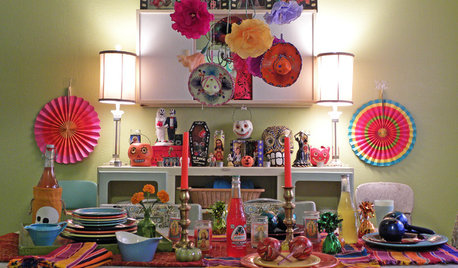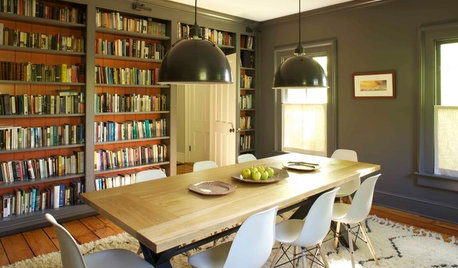Dead??
gardengal48 (PNW Z8/9)
15 years ago
Related Stories

FUN HOUZZHow to Survive an Epidemic of Walking Dead
Tips to use around the house and garden to prep for the zombie apocalypse
Full Story
HOLIDAYSMy Houzz: A Home Comes Alive With Day of the Dead Decor
Sugared skulls and bright paper flowers keep a Texas home's macabre decorating style on the lighter side
Full Story
DECORATING GUIDES12 Deadly Decorating Sins
Are your room designs suffering from a few old habits? It may be time to change your ways
Full Story
DECORATING GUIDESNo Guilt! 7 Deadly Sins in Décor
Make a room more interesting with a hint of gluttony, pride, sloth and the rest — no redemption required
Full Story
SMALL KITCHENSThe 100-Square-Foot Kitchen: No More Dead Ends
Removing an angled peninsula and creating a slim island provide better traffic flow and a more airy layout
Full Story
DINING ROOMSNew This Week: Proof the Formal Dining Room Isn’t Dead
Could graphic wallpaper, herringbone-patterned floors, wine cellars and fire features save formal dining rooms from extinction?
Full Story
PRODUCT PICKSGuest Picks: Fun Dia de los Muertos Finds
Animate your home with the bright colors and bold patterns of these Day of the Dead accessories
Full Story
MOST POPULAR11 Reasons to Paint Your Interior Doors Black
Brush on some ebony paint and turn a dull doorway into a model of drop-dead sophistication
Full Story
DINING ROOMSNew This Week: 3 Daring Dining Rooms
These modern spaces prove that the dining room is far from dead
Full Story
HOUZZ TOURSMy Houzz: Airiness and Intrigue in a Brooklyn Brownstone
The Dia de los Muertos figurines in the ornate fireplace are a dead giveaway: A free spirit with a creative bent lives here
Full Story





katob Z6ish, NE Pa
gardengal48 (PNW Z8/9)Original Author
Related Professionals
Newcastle Landscape Architects & Landscape Designers · Arlington Landscape Contractors · Beverly Hills Landscape Contractors · Dallas Landscape Contractors · Fort Mill Landscape Contractors · Hawthorne Landscape Contractors · Kaysville Landscape Contractors · River Ridge Landscape Contractors · Santa Ana Landscape Contractors · Oxon Hill Landscape Contractors · Charlotte Siding & Exteriors · Linden Siding & Exteriors · Oak Forest Siding & Exteriors · Orland Park Siding & Exteriors · West Haven Siding & Exteriorsrazorback33
katob Z6ish, NE Pa
razorback33
bubba62
razorback33
Tim_M
katob Z6ish, NE Pa
jgwoodard
gardengal48 (PNW Z8/9)Original Author
razorback33
jgwoodard
razorback33
jgwoodard
razorback33